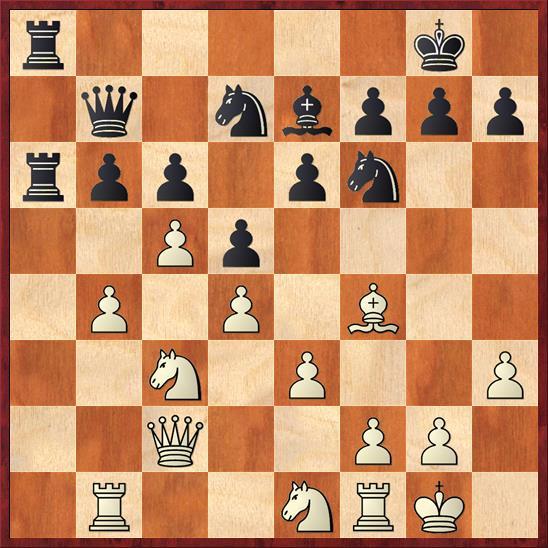
Typical Positions (Part 2)
Today we will continue with typical plans arising from the Queens Gambit Declined. I had a chance to experience the lack of knowledge in one critical and very popular line last weekend, while playing in the Philadelphia Open. The game ended favorably for me because my opponent did not know typical plans as well, but it made me think of how much of knowledge I needed to outplay someone of my rating or higher. We will look at a key game and how it influenced games played decades later.
But first of all let me show you my game.
We reached a theoretical position - the moves were more or less forced. I had a choice to play h3 or not to play it, but there are a lot of positions that in the end will transpose. Here I could play Bd3, but taking on a6 is fine too. One of the critical lines that I knew of is taking on a6 and pushing b5. This line is very sharp and as I remembered black sacrifices a piece but gets couple of passed pawns on the queenside. So... knowing of this line and playing it are two different things. While in a quiet position I could get away with not knowing typical plans, getting into this ultra-sharp position without specific knowledge is not a good idea. Hence I settled for a quite continuation.
What can we say of typical plans from this game? What I knew:
- Closing the position for black on the queenside is not a good idea as I have attack on the kingside;
- Getting my knight to a5 will secure the a-file for my rooks.
- I should not allow e5 under any circumstances.
- Massive exchanges on the a-file will not solve black's problems due to weakness on c6.
My opponent needed to know that under no circumstances he should play a4. If he knew this I might not have gotten any advantage at all. Next, let us see how the best in the world play this position and figure out what I needed to know to play it better.
Both sides played the opening superbly. Black did not rush with b5 but kept the tension on the queenside, while white gave up the a-file with Rb1 - but for now black cannot get much from owning the file.
Let us make a diagram after the last white move.

This move is connected with a plan of knight transfer to d3 from where it will support the c5-pawn and white can push for b5-sometimes. White also can expand on the kingside with f3-g4. Believe it or not, white does not have an equally good plan here. Ne1-Nd3 forces black to choose whether or not to play b5. Aronian does not manage to solve the problems for black.
Very impressive play from Grischuk, he must have known the Ne1-Nd3 idea along with b5 push. The key game that featured this plan is Dreev - Balashov back in 2000. Although the position is slightly different, the structure is the same.
The game could have gone unnoticed, since black equalized, but a decade later Ne1-Nd3 is still the main plan to play. Moreover, the pawns advance on the kingside with f3-g4 and bishop exchange and queen transfer to h2 are also seen in many of the recent games. Black defended very well with the b5-push, which became the main defensive idea for black. Another main idea for black is to exchange the dark-squared bishops through Bd8-Bc7. Despite the equal evaluation white has more space and for humans it is a big factor. Let us see the combination of the ideas from Dreev's game implemented in modern practice.
The game was messy with both sides having chances. Both players were familiar with the key ideas and plans of the opening and implemented them very well. Black got upper hand in the middlegame by keeping the queens alive. It is a rather important question to exchange or not exchange queens. The endgames probably are equal too but with the weakness on c6 it is bit harder for black to defend. A good example of the resulting endgame with queens present is Akobian's game shown below.
Now that we know typical ideas of this structure it is not hard to pinpoint the moments where black went wrong. The premature b5 potentially let white to start an early attack on the kingside. Normally, black is the one to dominate on the a-file, but white managed to capture it. The e5-break led to weakening of the d4-square. Akobian demonstrated how a pawn storm in the endgame can win the game.
Overall, after writing this article, I realize how many nuances I needed to know to successfully play this position. Typical plans are easy to remember and they stay longer in memory than specific lines. When learning opening theory it is important to have key games as guides, in here Dreev's game was an excellent example.
That's it! Next week we will continue with the topic of typical plans...






